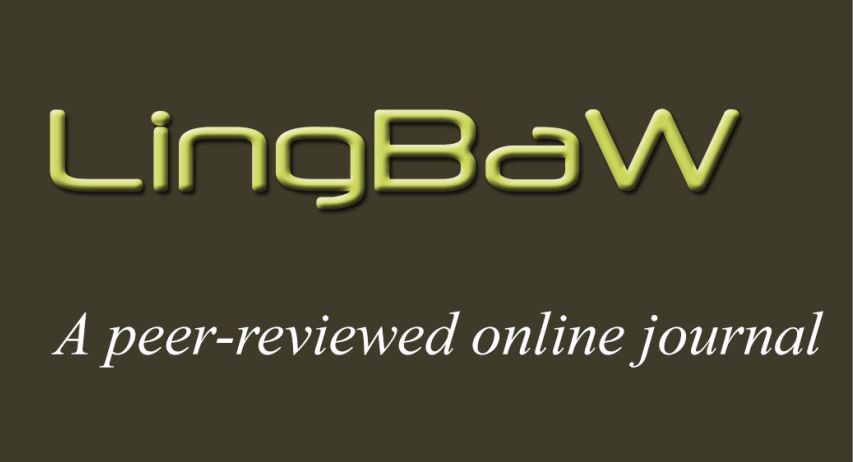Mixed compounds in code-switching contexts
Abstract
This pilot work analyses the acceptability of mixed compound words in code-switching contexts. In particular, we will discuss mixed Italian-German and Italian-English compounds, i.e. cases of mixing among languages where the process of compounding follows different rules for what concerns the position of the head, as well as inflection issues.
An Acceptability Judgment Task featuring different types of mixed compounds has been administered to two groups of participants, who are either bilingual or highly fluent in the two languages involved (Italian-German or Italian-English). Our conclusion is that it is overall possible to have mixed compounds. However, the two groups provide different judgments. For the Italian-German language pair, the possibility of mixed compounds is severely constrained, especially because of the different head-modifier parameters exhibited by the two languages and the interference of gender inflection. Though the English language patterns with German with regard to the head-modifier parameter, Italian-English participants accept a much higher number of combinations; indeed the fact that both Italian and English exhibit exocentric compounds, and that gender features do not interfere with judgments, might favour acceptability.
Keywords:
morphology, morpho-syntactic interface, code-switching, mixed compounds, integrationReferences
Adams, V. 1987. An Introduction to Modern English Word-Formation. London: Longman Group.
Alexiadou, A., and T. Lohndal. 2018. Units of language mixing: A cross-linguistic perspective. Frontiers in Psychology 9: Art. 1719. (Crossref)
Alexiadou, A. 2020. Compound formation in language mixing. Frontiers in Psychology 11: 1021. (Crossref)
Chomsky, N. 1995. The Minimalist Program. Cambridge, Mass.: MIT Press.
Cocchi, G., and C. Pierantozzi. 2022. Mixed compounds: Where morphology interfaces with syntax. In L. M. Savoia (ed.), Recent Morphology Explorations in Romance Languages. Languages Special Issue 7: 230. https://doi.org/10.3390/languages7030230 (Crossref)
Gast, V. 2008. Verb-noun compounds in English and German. Zeitschrift für Anglistik und Amerikanistik 56: 269–82. (Crossref)
Grossman, M., and F. Rainer (eds.). 2004. La formazione delle parole in italiano. Berlin: De Gruyter. (Crossref)
Halmari, H. 1997. Government and Code-switching: Explaining American Finnish. Amsterdam and Philadelphia: John Benjamins. (Crossref)
Mahootian, S. 1993. A Null Theory of Code-switching. Ph.D. Dissertation, Northwestern University.
Mahootian, S., and B. Santorini. 1996. Code-switching and the complement/adjunct distinction. Linguistic Inquiry 27: 464–479.
MacSwan, J. 1999. A Minimalist approach to intrasentential code switching. New York: Garland.
Muysken, P. 2000. Bilingual Speech. A Typology of Code-Mixing. Cambridge: Cambridge University Press.
Myers-Scotton, C. 1993. Duelling Languages: Grammatical structure in Code Switching. Oxford: Oxford University Press. (Crossref)
Myers-Scotton, C. 2002. Contact Linguistics. Oxford: Oxford University Press. (Crossref)
Nartey, J. S. 1982. Code-switching Interference or Faddism? Language use among educated Ghanaians. Anthropological Linguistics 24: 183–192.
Plag, I. 2003. Word-Formation in English. Cambridge: Cambridge University Press. (Crossref)
Poplack, S. 1980. “Sometimes I’ll start a sentence in Spanish Y TERMINO EN ESPAÑOL”: Toward a typology of code-switching. Linguistics 18: 581–618. (Crossref)
Poplack, S., and M. Meechan. 1995. Orphan categories in bilingual discourse: Adjectivization strategies in Wolof-French and Fongbe-French. Language Variation and Change 7: 169–94. (Crossref)
Sankoff, D., and S. Poplack. 1981. A formal grammar for code-switching. Research on Language & Social Interaction, 14/1: 3–45. (Crossref)
Scalise, S. 1994. Le Strutture del Linguaggio. Morfologia. Bologna: Il Mulino.
Stenson, N. 1990. Phrase structure, Congruence, Government and Irish-English code-switching. In R. Hendrick (ed.), The Syntax of Modern Celtic Languages, 169–197. San Diego, California: Academic Press. (Crossref)
Timm, L. 1994. The limits of code-switching constraints, with some evidence from Breton-French code-switching. Journal of Celtic Languages 3: 95–134.
Trach, E. 2022. Examples of Compound Words by Type. https://examples.yourdictionary.com/examples-of-compounds.html
Treffers-Daller, J. 2005. Evidence for insertional codemixing: Mixed compounds and French nominal groups in Brussels Dutch. International Journal of Bilingualism 9: 477–506. (Crossref)







